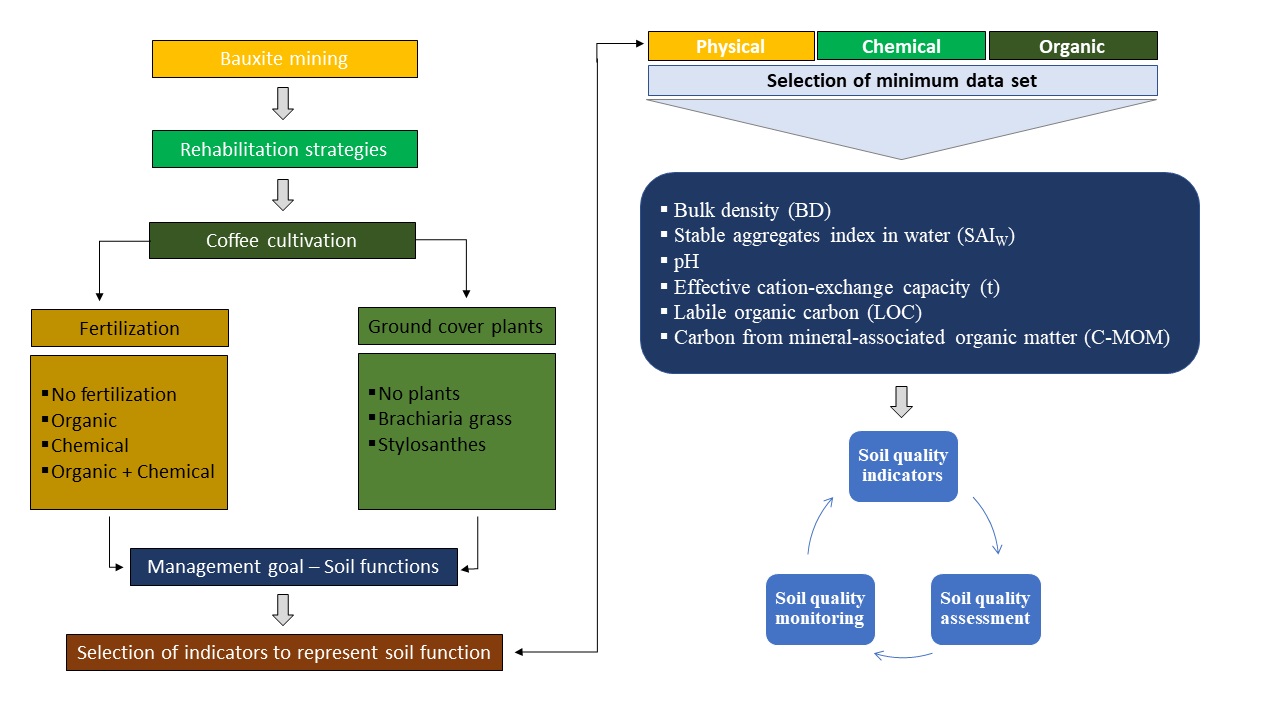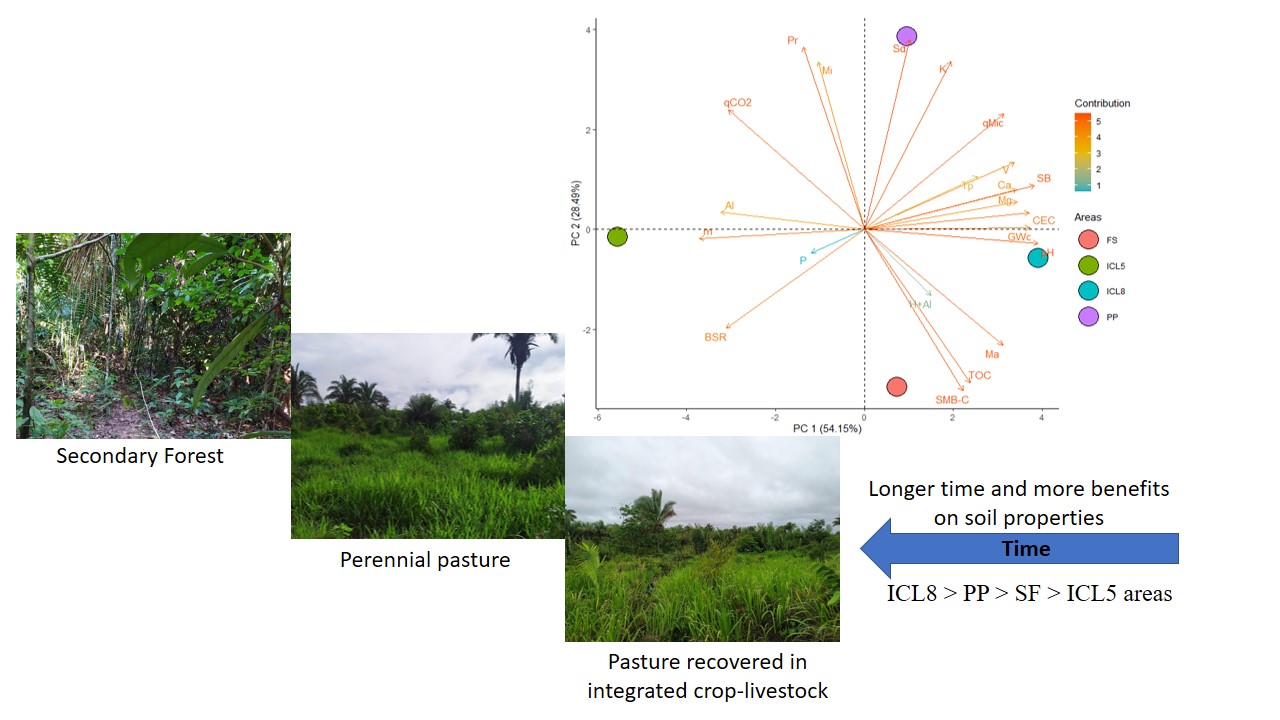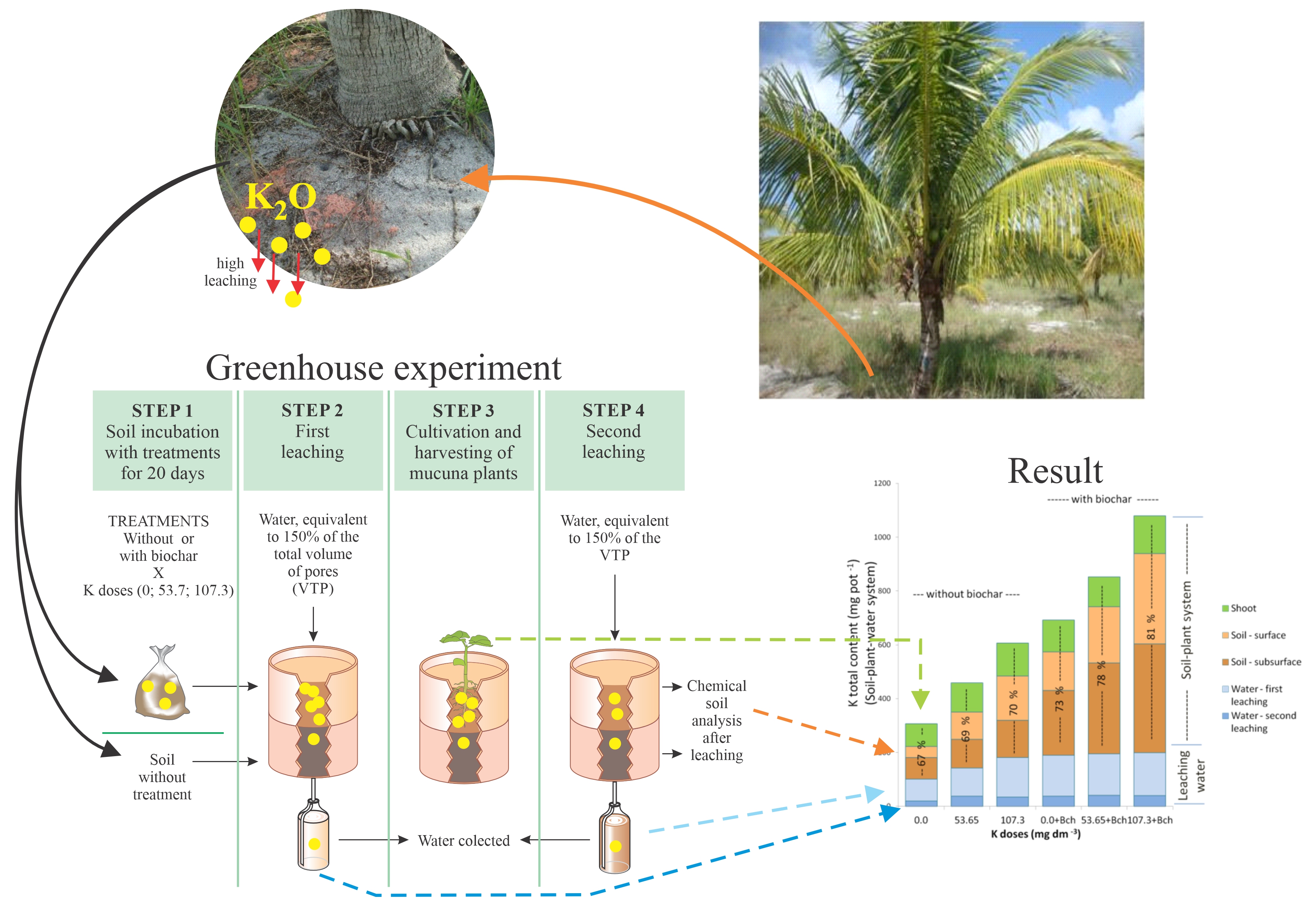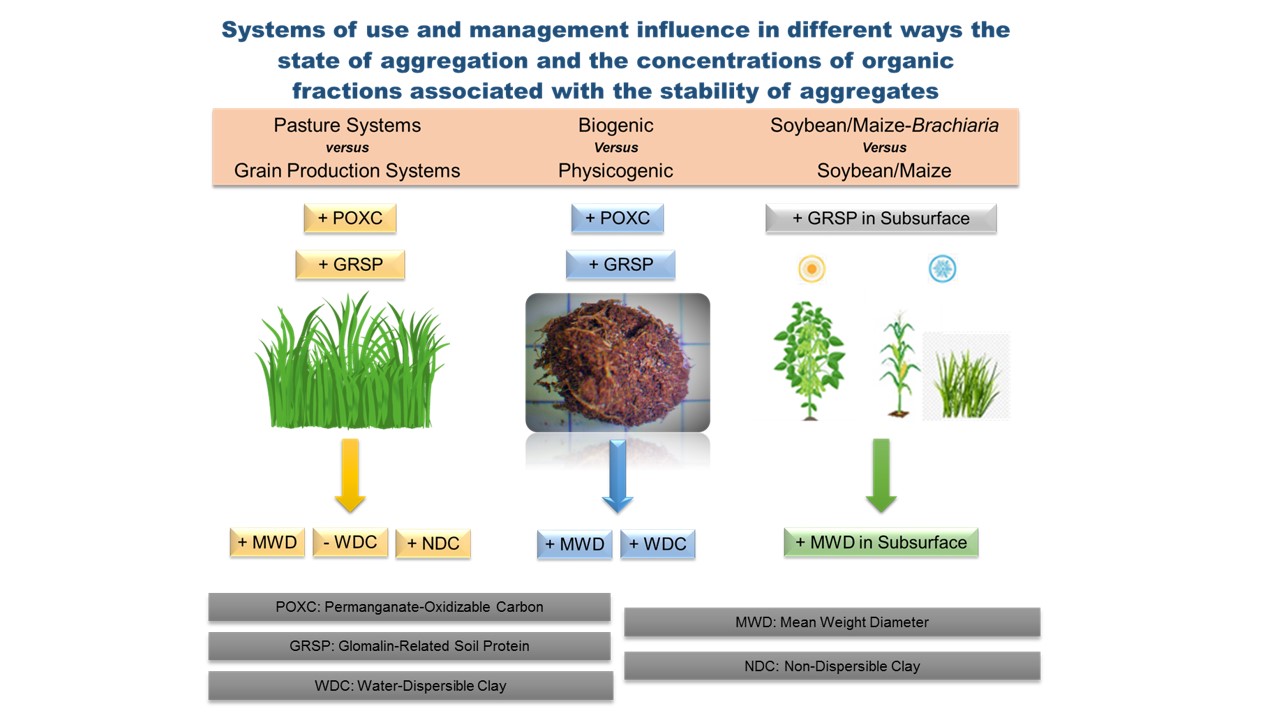Soil quality indicators for monitoring the short-term effects of mined soil rehabilitation strategies for bauxite
22/Mar/2023
ABSTRACT Mining is a significant driver of soil mobilization, which impacts its physical, chemical, and biological properties. Changes in land-use affect the distribution of organic matter fractions in stable aggregates, a process that is still poorly understood, especially in drastically altered areas. Recovering and monitoring soil quality to ensure the sustainable development of agricultural crops in these areas after mining is challenging. This study aimed to evaluate the influence of agronomic practices in soil rehabilitation in a bauxite-mined area after […]
Chemical, physical, and biological properties of soil with pastures recovered by integration crop-livestock system in Eastern Amazon
21/Mar/2023
ABSTRACT Soil quality can be understood as its capacity to provide several essential services within the ecosystem and has been used to understand the impact of different managements, providing information that proves the benefits and your maintenance of the agroecosystem. To understand the impact of different managements, this study aimed to compare the chemical, physical, and biological soil properties in pasture areas managed with different recovery times in an integrated crop-livestock system about perennial pastures and secondary forest. The following […]
Climate-smart agriculture and soil C sequestration in Brazilian Cerrado: a systematic review
06/Mar/2023
ABSTRACT Climate-smart agriculture (CSA) practices, mainly no-tillage (NT), cover cropping (CC), soil fertilization with organic amendments (OA), and crop-livestock (CL) and crop-livestock-forestry (CLF) systems, has been widely adopted in areas from Brazilian Cerrado. The CSA may partly offset former soil C losses and contribute to climate change mitigation. However, contradictory findings brought uncertainties about the effect of CSA on soil C. Here, by a systematic review of 87 papers and using 621 data pairs, we provided a pervasive biome-scale analysis […]
Biochar decreases nutrient leaching in KCl-fertilized Podzols grown with black mucuna
06/Mar/2023
ABSTRACT Podzols are highly sandy soils, in which elements, such as potassium, needed by crops, are easily leached. Studies have indicated that biochar can contribute to increasing cation exchange capacity of the soil, which can improve the retention of bases. This study aimed to evaluate the effect of the poultry litter biochar combined or not with increasing doses of KCl, on leaching and soil base content, on the production of green manure biomass, and on the distribution of K in […]
A proposal to clarify the use of Sum of Bases in the Brazilian Remineralizer Regulation and in Soil Science
19/Jan/2023
ABSTRACT The term Sum of Bases has different meanings in Soil Science and the Remineralizer Regulations. This issue may cause misunderstandings in communication, particularly between the agricultural community and the mining community, becoming an obstacle to the advancement of the use of this soil amendment. In this scientific note we propose the use of subscript “R” (SBR), standing for Rock, in English, and Rocha, in Brazilian Portuguese, and “S” (SBS) standing for Soil in English and Solo in Brazilian Portuguese. […]
Base saturation is an inadequate term for Soil Science
12/Dec/2022
ABSTRACT Bases are chemical species that donate electrons, accept protons, or release hydroxyls (OH–) in aqueous solution. In Soil Science, “base saturation”, “exchangeable bases” or “basic cations” has been widely used to distinguish Ca2+, Mg2+, Na+, and K+ from H+ and Al3+ cations. This terminology is confusing since none of these cations are truly a base in chemistry sense. However, in the absence of the proposition of a correct term, the term “base saturation” remains in use nowadays, causing confusion […]
Response to Letter to the Editor on “Base saturation is an inadequate term for Soil Science”
12/Dec/2022
In response to the Letter to the Editor on “Base saturation is an inadequate term for Soil” (), the editors of RBCS, Reinaldo Bertola Cantaritti and José Miguel Reichert, would like to thank for the issues raised and discussion provided by the authors on the terms “sum of bases” and “base saturation” . The theoretical fundamentals presented by the authors to characterize the alkali metals (Na and K) and alkaline earth metals (Ca and Mg), Group 1 and 2 in […]
Stability, labile organic carbon, and glomalin of biogenic aggregates in sandy soils under management systems in the subtropical region of Brazil
21/Nov/2022
ABSTRACT Soil aggregates and their stability affect a wide range of soil properties. This study aimed to (a) verify whether biogenic aggregation provides higher macro- and microaggregate stabilization, and (b) evaluate whether biogenic aggregates are associated with higher labile organic carbon and glomalin contents. Three management systems were evaluated (permanent pasture, PP; no-tillage system, NT; and no-tillage + Brachiaria system, NT+B) as well as a reference area (Atlantic Forest biome vegetation, NF). According to their origin or formation pathway, the […]
Phosphorus lability in a subtropical Acrisol under long-term integrated crop-livestock system: impacts of grazing management and cropping system
28/Oct/2022
ABSTRACT Studies on lability of soil phosphorus (P) under integrated crop-livestock systems (ICLS) are still scarce, especially for deep soil layers (more than 0.20 m depth) and different managements in the crop and livestock phase. Distinct management in these phases may lead to a different distribution of soil P pools according to its lability (labile, moderately labile, less labile and residual) and, consequently, the P availability for plant nutrition. This study aimed to determine the soil P pools, by P […]
Allometric equations for biomass and contents of macronutrients in a young Tectona grandis stand
23/Sep/2022
ABSTRACT Evaluations of biomass and nutrient contents in teak stands are necessary alternatives for avoiding early cutting to provide supplemental data for the plant module of fertilization recommendation systems. This study aimed to adjust allometric equations to estimate the accumulation of biomass and nutrient contents in teak plantations in the central region of Brazil. Plots in seminal and clonal stands contained 81 trees aged 75 months, that had not received previous fertilization or thinning. Additional clonal stands aged 15, 51 […]






